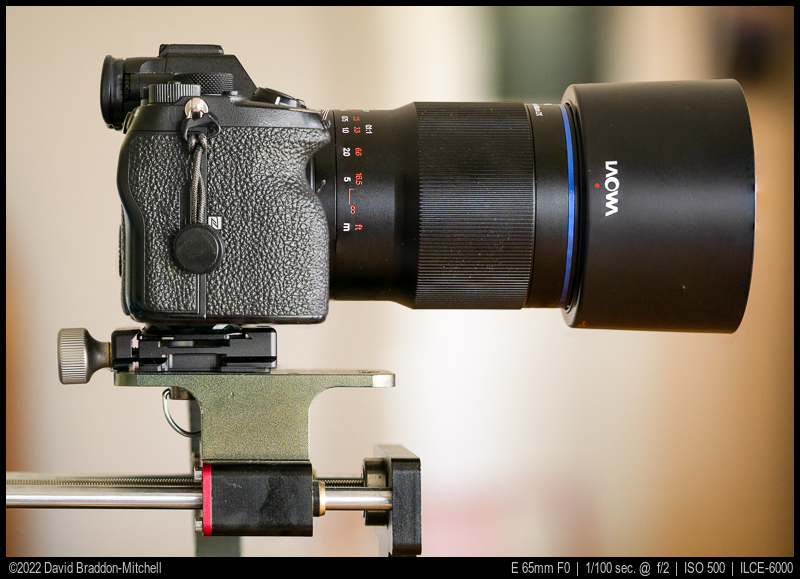
A couple of years ago, with samples taken on the last major overseas trip I took before Covid closed the world for quite a while, I reviewed the Laowa 100mm macro. I concluded it was good and sharp, a little challenged for flare at longer distances, but absolutely superb in the macro range. Eventually – in fact very recently, a couple of years after that review – I purchased my own copy. I was doing a lot of macro and at actual macro distances that lens is in most ways better than all the pricier lenses I’ve tried (though perhaps not as an all purpose short tele with macro).
Of course, inevitably, after I paid my money, Laowa announced a new lens – a 90mm, built specifically for mirrorless, and a lot more compact, with otherwise similar specs.
Did I blow it? Should I get rid of my recently acquired 100 and get the new 90? Read on and see.
Samples
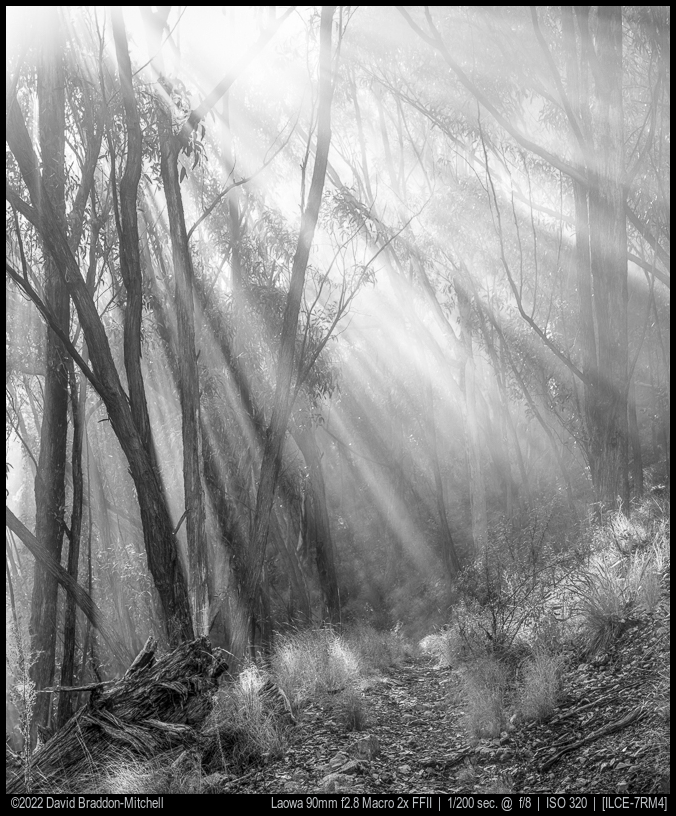
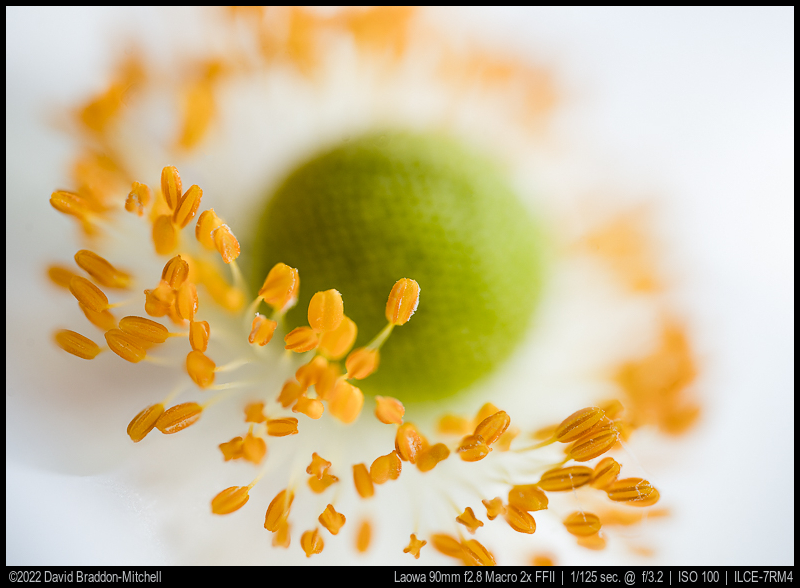
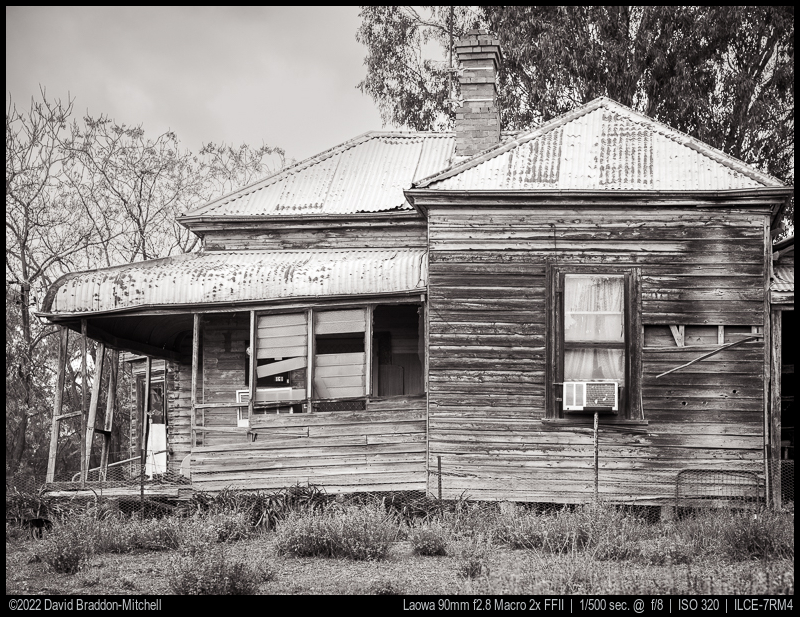
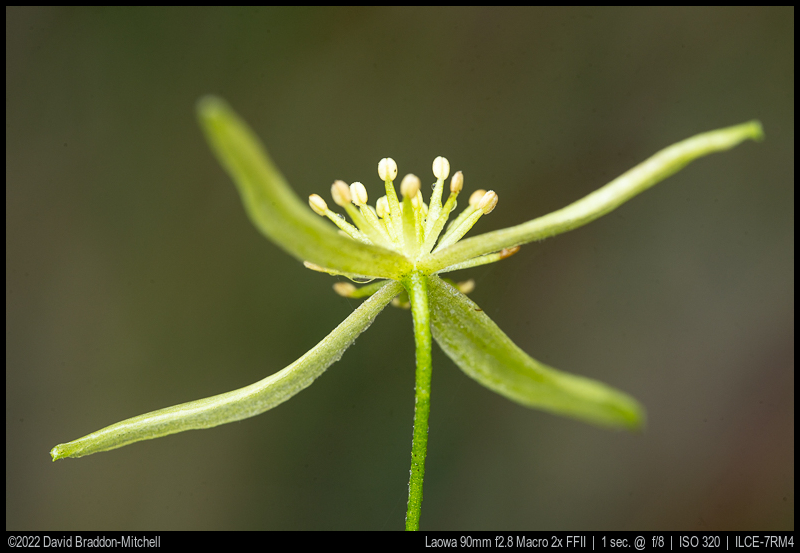
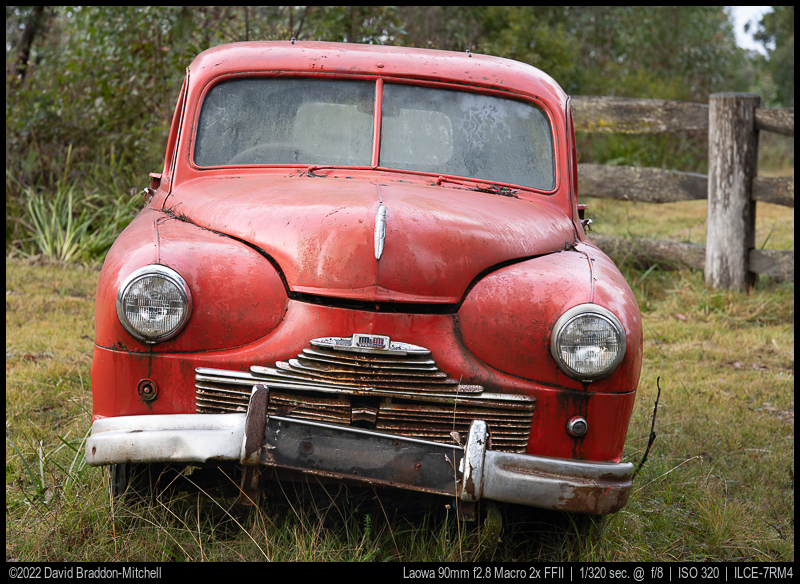
Contents
- Specifications
- Features, Build Quality and Handling
- Infinity Resolution
- Portrait Distance Resolution
- Macro Distance Performance
- Optical Vignetting at Non-Macro distances
- General Bokeh
- Vignetting (Corner Shading)
- Chromatic Aberration and Focus Shift
- Distortion and Distortion Correction
- Flare
- Alternatives
- Conclusion
- More Samples
- David Braddon-Mitchell
- Latest posts by David Braddon-Mitchell (see all)
Specifications
| Diameter | max 74 mm |
| Length | 120 mm |
| Filter Thread | 67 mm |
| Weight | 619 g |
| Minimum Focusing Distance | 0.2m |
| Maximum Magnification
Working Distance at Max Mag Working Distance at 1:1 |
2:1
70 mm 120mm |
| Number of aperture blades | 13 |
| Elements/ Groups | 13/10, 3ED |
If you are interested in purchasing it, buying it from one of these affiliate links makes a small contribution to defraying the cost of this blog. You can get it at:
Features, Build Quality and Handling
The build quality is really nice.Markings are engraved and filled, it’s tightly constructed from metal and has what seems like a durable and attractive finish. It’s hard to imagine better in a metal helicoid finish.
The lens does not change in length as you focus from 2x life-size to infinity. But like the 100 before it it’s not really an internal focus lens: the trick is that there is an outer barrel, and as you focus closer, the lens extends inside that outer barrel. At closest focus the front element gets very close to the end of that barrel. The 100mm lens came with a fitted 67mm filter. I noticed one reviewer did a test to see if that filter was optically necessary, concluded it wasn’t, and removed it. That was a big mistake: there is grease lining the inner barrel, and dust getting in would be not good at all. Perhaps because of that Laowa have fitted the new lens with an immovable front glass. I can see why, but the bad thing about that is that it can’t be replaced easily. The nice thing about the old design was that, provided you kept the filter in place, you in effect had a cheaply replaceable front element!
That grease lining is one of the suspects I have for the relatively poor flare performance at longer distances: as the lens focusses further away, the true front element receded, exposing more of the grease lined barrel. The same is true with the new lens, so we sill see in the vignetting section whether the same problem exists.
The focus ring is nicely damped. and is perhaps a touch stiffer than ideal. The focus throw is a bit longer than the 100mm which is very welcome; about 140 degrees between 1:1 and infinity, which makes focus at longer distances much easier.
The Sony version, reviewed here, has no electronic contacts so there is no EXIF, and stabilisation will be 3 axis. All versions have a 13 blade aperture ring which keeps bokeh balls nice and round.
Infinity Resolution
Here’s the usual infinity resolution image. As usual in my recent reviews, I have taken to moving the camera so as to get the same subject in each location, to make comparison easier. I focussed when the subject was central, and did not change focus for midfield (intersection of rule of thirds lines) and extreme corner, so the effects of field curvature are not hidden.
Centre and mid frame are both basically as good as I can distinguish from open. The extreme corner is very good wide open (better than the 100) and it gets a little better as you stop down. when it crisps up nicely. And the very slight softness in the extreme corner is not visible even a little bit away for the corner. This is amazing for a lens which can do twice life size macro; it’s about as good over most of the frame as some of the very best short tele lenses that can’t do macro..
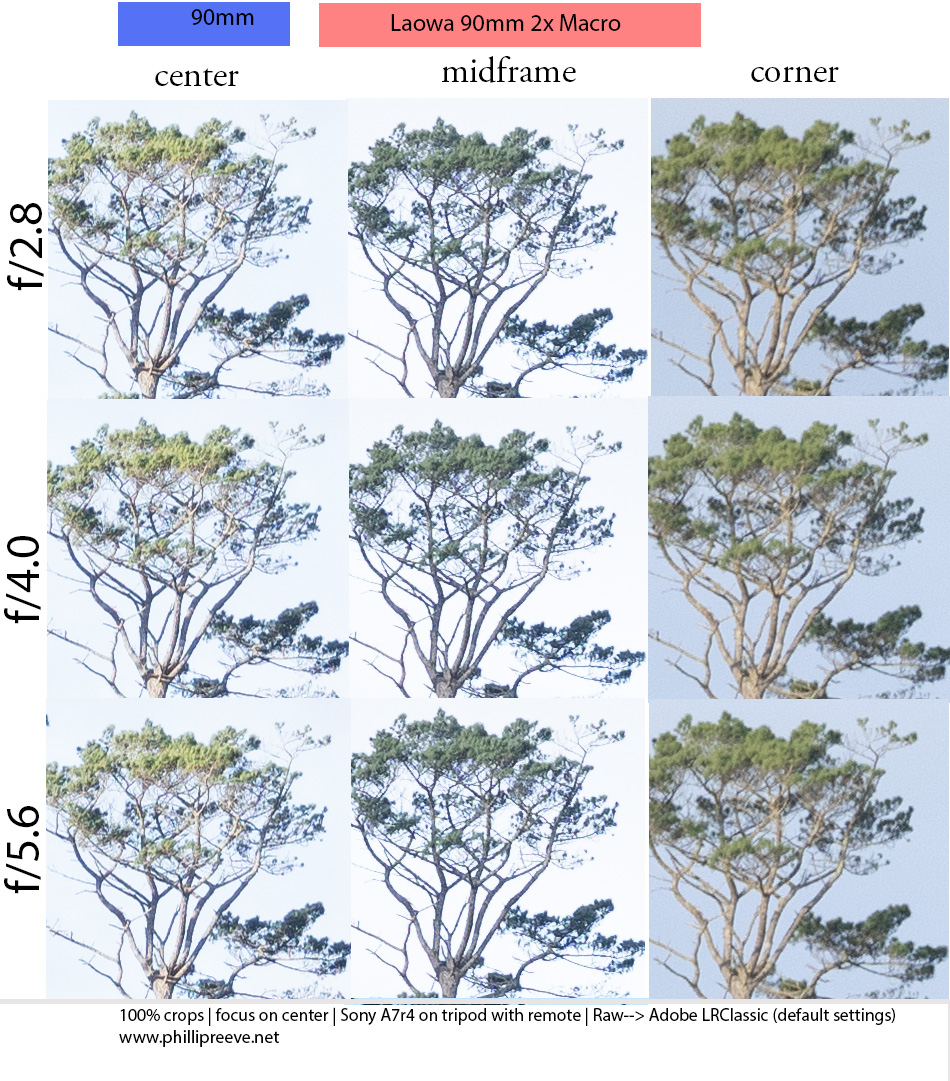
Comparatively my review copy of the Laowa 90 is better than my review copy of the 100 was at all apertures and locations in the frame. The Voigtlaender 110 is still a touch better in the extreme corner for the first couple of apertures, but only really visibly so at 100%. At every other location/aperture pair at infinity the Laowa is as good as, or better than, any lens I’ve tested.
Portrait Distance Resolution
One of the primary uses of a general short tele lens is for portraiture. Many buyers of this lens may want it, therefore, to double as a portrait lens. What matters here is not so much even resolution across the frame, but that the eye of your subject, at whatever place you put it in the frame, is sharp when you focus on it. In past reviews I have used a live subject and focused on their eye, but this both requires a cooperative friend, and is subject to possible movement.
Instead I have focused on bank notes, which we also often use for MOD (minimum object distance) tests.
I focused at 2.5 metres, which is a nice half-body to head-and shoulders distance for portraiture. I focussed first in the centre, and then at the rule-of-thirds intersection. Any further into the corners in an unlikely location for an eye in a portrait.
For reference, the two eyes of the Ben Franklin in this image together are about as wide as a regular human eye. This is at 1:1 pixel dimensions
First, wide open at f2.8. Left is centre, right rule of thirds intersection.
Second stopped down to f4.0: again left is centre, right is rule of thirds intersection.
This is stunning performance. Pretty much as good as it gets. Bearing in mind that a real human eye occupies the same size as both eyes and the area between them in the banknote, at portrait distance this shows that it matters very little much where you place your eye or what aperture you use. It’s maybe just discernibly less sharp at the rule of thirds intersection, but if it is, not in a way that is visible except at 1:1 peeping. This is another respect in which the new lens is an improvement over the 100 which was good, but not as good, at these distances.
Macro Distance Performance
This is the eye of Ben Franklin on a US $100 note (or “bill” as the Americans call them) at life size, focus on the centre middle a corner.
It’s very difficult to find any difference between them, wide open at f2.8 at life size.
As you stop down, it gets less good. The lens appears to be diffraction limited wide open at life-size and below, which is impressive.
2x appears on balance to be exactly as good. But the limiting factor in these images is the ability to keep the camera parallel to the bank note, and the flatness of the bank note, even using mirror alignment! More specialised testing equipment would be needed to make fine-grained distinctions, but those distinctions would be likely invisible in practice. Even at life size and wide open, small differences are as likely to be limitations of the testing procedure, as real differences in the lens. There was some mild FC, but since for real macro purposes (no-one uses macro lenses to copy documents any more!) performance on what if focussed on is what matters, the image was refocussed at each position.
Macro Bokeh and Optical Vignetting
Like the 100 before it, optical vignetting is impressive at macro distances. Here is something pretty astonishing. There is remarkably little cat’s eye effect: in macro conditions it’s better than the Sony 90 in this regard, which is in turn better than the CV 110. The bokeh balls are essentially round at every location in the frame.

The 13 blade aperture on the Sony version really does its job. There are no signs of edges at any aperture from wide open to f11! There’s also no sign of colour outlining either, further testament to the excellent colour correction.
Optical Vignetting at Non-Macro distances
At the wides apertures most lenses cut off the bokeh balls so they are not perfectly round. This has two effects: one is that when there are specular highlights in the background, instead of being round, they are “cat’s eyes” in the corners. The other effect is that this slight deformation of out of focus structures makes the background swirl a little. Some people seek out old designs that have huge amounts of optical vignetting to achieve this swirl (such as the Helios 44-2).
Optical vignetting (the phenomenon is sometimes called mechanical vignetting though these are slightly different phenomena: we’ll have an article explaining this later) is not as impressive as at macro distances, but still good.
Here is wide open at f2.8.
Left is the extreme corner, mid is rule of thirds intersection, right is centre.

Performance is extremely good: considerably better than the 100mm predecessor, for instance. The cat’s-eye effect in the corner is almost completely gone at one stop down. At every aperture the balls are very smooth in shape.
General Bokeh
General bokeh is very nice, more so than the 100, within the constraints of an f2.8 lens.
The images that follow are all wide open at f2.8 of backlit foliage and flowers at the some type distances for portraits: .75 metres (headshot) 1 metre (tight head and shoulders) 1.8 metres and 2.2 metres. The foliage on the right hand side of the frame is at about 2.8 metres distance, and so is in the transition zone by the time we are focussed at 2.2 metres.
In case you are interested in the bokeh in more overcast conditions, here are three distances all wide open.
Vignetting (Corner Shading)
Vignetting in this sense is a lack of even illumination across the image field. It is the result of a mixture of causes; usually optical vignetting and natural vignetting. Natural vignetting is the residual vignetting which is not reduced by stopping down. The increase in vignetting relative to this at wider apertures is usually another effect of the optical vignetting we discussed above.
Macro lenses often behave very differently at infinity and at macro distances, with vignetting being much reduced at close distances. So I have measured vignetting for two focus settings: Life-size (1:1) and infinity.
At life-size vignetting is very well controlled;
At infinity vignetting is somewhat stronger, but again negligible by f8. This is also a good performance.
We recommended having a look at this article first to get an idea how this brightness graph works.
Chromatic Aberration and Focus Shift
There is almost no visible LaCA despite the fact that it doesn’t have contacts, and so there is no auto correction happening.
There is no visible LoCA. It’s an apochromatic lens, with way better colour correction than many lenses that are labelled APO. Simply no fringing on bokeh.
There is no focus shift.
What is to say? This is performance that I have not seen bettered by any lens.
Distortion and Distortion Correction
I can’t measure any distortion on this lens. Perhaps a +1 correction in photoshop is slightly better than uncorrected, but perhaps not. Impressive.
Flare
Flare, especially at longer distances was the achilles heel of the 100mm lens. Despite having a similar mechanism that at first worried me (behind the front protective element the real front group moves back in a long tube as you focus further away) the flare and overall contrast performance of the new lens is much, much better.
It’s very hard to produce reproducible tests for flare, and flare depends so much on exact conditions. I can tell you that in overall use I have only occasionally had veiling flare issues with the new 90, but had them very often with the old 100.
But I can give a fairly reliable comparison: what I did was fix on an overall situation (I will give examples of two: sun just outside the frame in the top right corner, and sun in the frame at the top left rule of thirds intersection). I then mounted on lens in that position, and made small changes so that the flare was *as bad as possible*. I then mounted the other lens in the same starting position, and made small changes so it was also as bad as possible. That way you know that some small change is not favouring one lens over the other. I can also tell you that small changes did not make a huge difference with either lens.
First wide open with the sun in the frame, top left ROT intersection. 90mm is left.
By f4, the 90 is pretty flare free while the 100 is if anything worse. By 5.6 both are quite good and similar. The only difference at f5.6 is that the blue artefact you can see in the 100mm image above remains, and is larger than the remaining green artefact in the 90mm image.
The difference between them is greater, and harder to disguise or control, with the sun just outside the frame.
Here are both wide open:
And here are at f5.6, where the difference remains significant – and indeed never goes away.
Sunstars
There are’t any really. That’s inevitable with the 13 blade aperture that gives such nice performance in the macro range.
Alternatives
Sony G 90mm f2.8 Macro
Reviewed by Phillip here. This is Sony’s entry in the short tele macro field. Its very good at longer distances, and superb at macro distances. It has great macro bokeh, better than most of the competition, but the Laowa may be a touch better. The Sony has better contrast at normal distances and all the conveniences of AF (with an unusual but in my opinion great MF system, where you have the choice of a quick shorter throw linear MF system to set magnification, or a longer throw system for precise focus). More expensive. Also, like most of the competition, can’t go to 2:1. The Laowa ia a better lens if you most care about macro. If you are a manual lens lover, and don’t mind the lack of contacts, and can live with the flare, the Laowa is also even better at long distances. The Sony probably makes more sense overall as an all purpose long macro though if macro is not your primary interest. Having said that, I’m not a fan of using a single lens for macro and portrait/landscape. For longer distances you can get either a much faster lens, or a much smaller one, and either way an “all in one” is a big compromise.
Canon MPE 1-5x 65mm
This is a specialist lens that is how I have got 2x magnification before the Laowa arrived. It is a macro only lens which does not focus to infinity (or focus at all, actually, the ring just selects magnification, you move the lens to focus). The Laowa is sharper at all shared magnifications, and the Laowa has better bokeh and colour correction. Bokeh may not matter much at high magnifications, though, because to avoid diffraction you will be likely shooting wide open (where the aperture blades play no role) and focus stacking. If you do shoot stopped down, the MPE has a slightly distracting shape to the bokeh balls. And the new Laowa is much sharper and has less CA! The only benefit of the Canon to the macro enthusiast is going to 5x. But if you really want that, get the Laowa 2.5-5x as well! It’s small, can be got very cheaply, and is also better than the Canon. My Canon has been sold.
Voigtländer 110mm f2.8 Macro Apo-Lanthar
Reviewed by Phillip and me here. This is definitely the best of the available modern 100-ish lenses from half life size out to infinity. Incredibly sharp, incredibly contrasty and with great sunstars. But at life size the Laowa is even better (and realistically close enough at most settings) and of course the Laowa goes all the way to twice life size without discernibly loss of quality.
Legacy options
There is a review of the revered Tokina here; I would pay the extra for the Laowa though . Some of the slightly older Sigma AF macro lenses are very good indeed. The Sigma AF 70mm F2.8 EX DG Macro (not the new ART) macro was legendary in its time, and the Sigma 105mm f/2.8 EX DG is very good too. Either could be a good budget choice for use on an adapter (you probably should look for the Canon mount version) if you only need 1:1 and AF appeals.
But really, the Laowa is not expensive, so unless you are really short of cash, and find one of these older lenses at a much cheaper price (which is getting hard because of collectors) if it’s a short tele macro you want, and it’s primarily for macro, this is not just the best of them, but one I can’t imagine being bettered.
Conclusion
good
|
average
|
not good
|
This is a truly first rate lens: from my perspective it means Laowa has come of age. It’s not a merely budget lens, it’s overall package of virtues is not challenged, and for each of the things it does – high magnification, short tele general purpose – it is close to, or exceeds, the performance of lenses that do only one of those things. If you want a high magnification tele macro lens for both normal and macro distances, on any mirrorless platform and don’t care about lack of EXIF and manual focus, this is the lens to get. It’s just that good.
But if you don’t want the overall package – a short tele lens for general use that also does high magnification macro – it is still a compelling option, but there are then others to consider.
If your main interest is high magnification macro, the older Laowa 100mm f2.8. despite being a DSLR design, is almost as good (to be honest we don’t have the testing equipment to distinguish such good lenses at 1:1 or 2:1 so o perhaps it’s just as good). You can probably get that lens very cheaply now, and while it’s not nearly as good at longer distances, it’s great for macro.
How much of a factor should high magnification macro be for you? If you already do it, and want it, then obviously a big factor. But if you just think “it’d be great to have that extra capability” you should think first. Greater than 1x macro is a discipline. The product photo at the front of this review shows the camera on a motorised rail. There is a reason for that. 2x macro more or less requires such a rail. The second sample image of the Japanese Anemone is a focus stack of maybe 60 images. Sometimes I take over a hundred. You might get a few arty images at 2:1 with super thin DOF; but you will tire of it. Longer term use requires a rail, a good tripod, stacking software and maybe even macro lights. It’s a lot of fun and a cool hobby – but it’s a new one, and if you don’t want to extend in that way, the extra capability is of no use to you!
If your primary interest is longer distances, you can get a much smaller lens (say the Sigma 90mm f2.8 DGDN) which is much more pleasant on the camera and have your macro gear be seperate. Or you can have a much faster lens – say an 85mm f1.4, and also a seperate macro lens like the 100.
But if you are someone who shoots both macro and general purpose on the same outing, and likes the short tele focal lengths for these purposes, this lens is very highly recommended.
B&H Photo (affiliate link)
More Samples
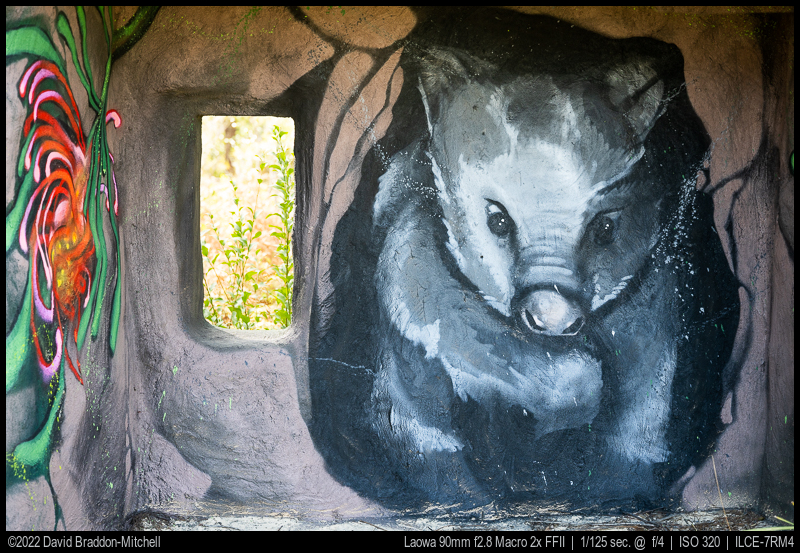
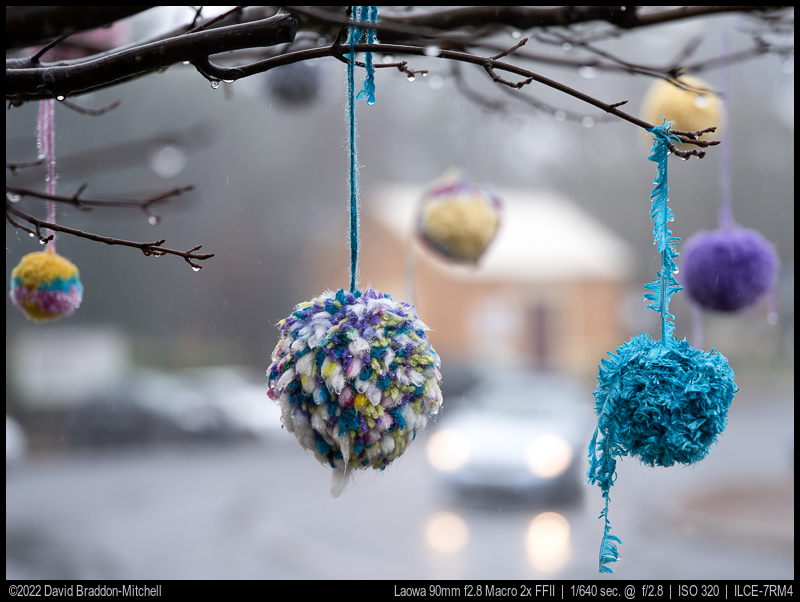

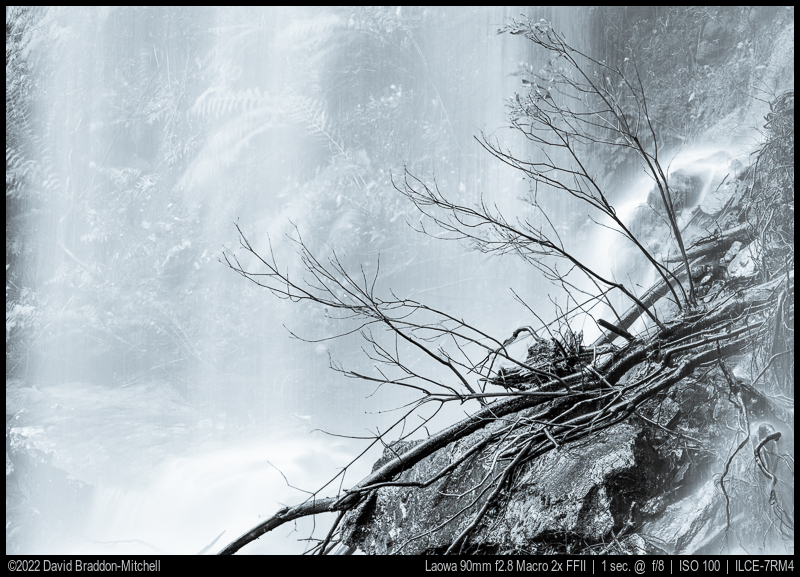
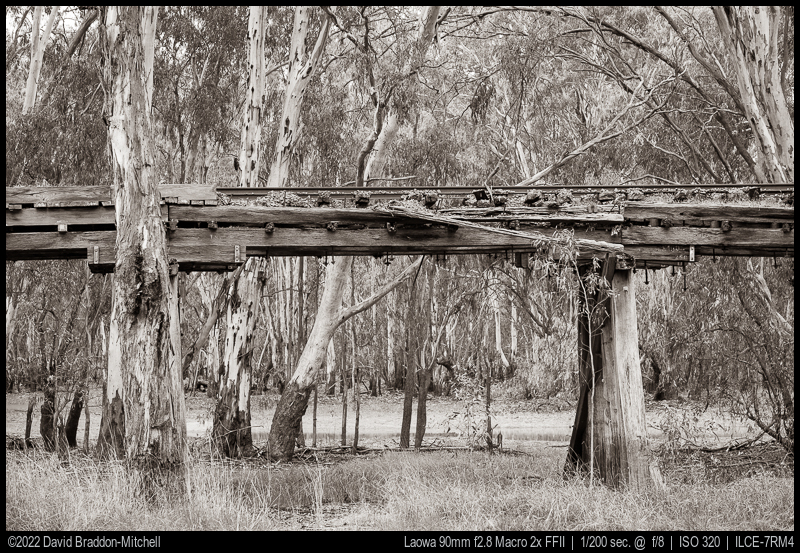
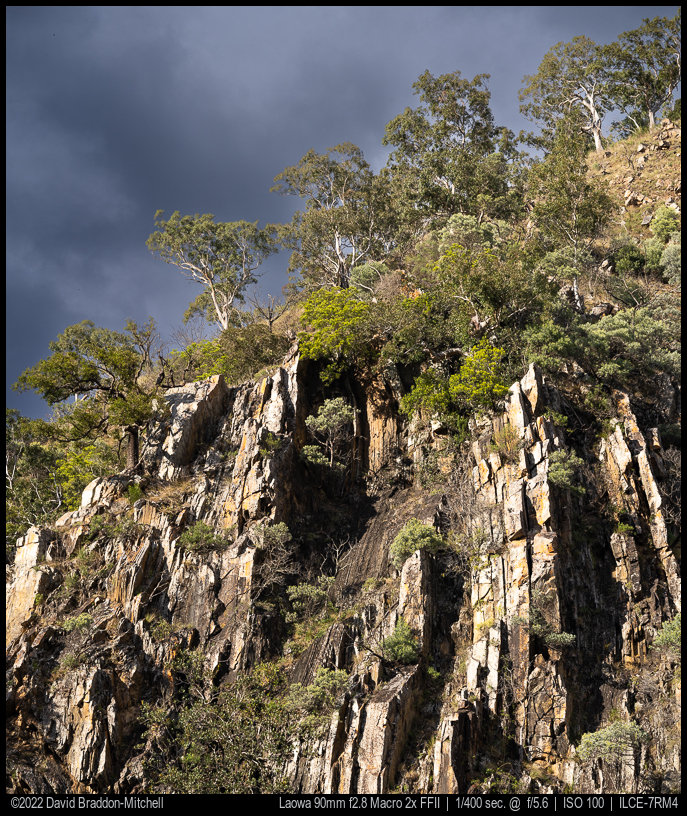
This site contains affiliate links. If you make a purchase using any of the links marked as affiliate links, I may receive a small commission at no additional cost to you. This helps support the creation of future content.
David Braddon-Mitchell
Latest posts by David Braddon-Mitchell (see all)
- Laowa FFii 90mm F2.8 CA-Dreamer Macro 2x: getting close! - August 21, 2022
- FLM Ballheads: a rediscovery - February 4, 2021
- Laowa 14mm f4 Detailed Review - December 31, 2020

























Yamaki Kazuto, ceo of SIGMA made a tweet “After lockdown all over the world, our sales has significantly dropped, but macro lenses are still popular.” in 2020. Sigma announced 105mm f/2.8 A DG DN after the tweet. My friend got his lens after the release and kept talking about how beautiful potatoes could be. Also, Lenstip’s review said it is a record-breaking high-res lens. I think getting Sigma 105 is worthy consideration, too. Though I think sharpness in this level depends on how well centered or assembled the lens is.
But, I can see the Laowa’s edge in your review. It vignettes very little and can get 2:1 shots without a teleconverter or extension tubes. And also it can be nice short telephoto one-lens solution.
Thanks for the review. 🙂
None of us has used the new Sigma 105, which is why we I didn’t oficially mention it. Trustworthy reviews suggest that in terms of resolution and contrast it is superb, probably at least as good as the Laowa. However it doesn’t go to 2:1, and the MF method is a bit clunky for macro purposes: there is no way to dial up a particular magnification, and focus by my moving the camera.
Heh, I bought their 100/2.8 towards the end of last year myself, at that point it didn’t look like they were making a mirrorless version (they’d just announced the tiny 85/5.6 instead)… Seems like some of the improvements are more significant than other reviews I’d read had suggested.
I even went thru some trial and error to find a collar for the 100/2.8 just cause I thought it’d handle better on a rail with it (and Laowa’s own collar had some issues even after they updated it w/a metal build)… And now I find myself mildly tempted to switch to the 90/2.8.
Wow! Very impressive lens and for less than $500 brand new!? That’s amazing. I don’t have any use for macro right now and when I do need it, I just use my Tokina. However, this might be the next most competitive macro option due to the excellent contrast, microcontrast, bokeh, 2x ability, and cheap price. I can only imagine in a couple years they will be under $400 used too. Thanks for the review David!
Hello David,
thanks for this excellent review. I have the 100mm Laowa and think of changing to the 90mm. But there ist still one question for Macro-Stacking: Can this lens be used with a lens collar like the 100mm Laowa? May be with a modified lens collar?
regards
Lothar
The official lens collar for the 100 really doesn’t work very well on the 100, I think it might work just as well or badly on the 90 but I haven’t tried it. I’ve used the Novoflex generic collar on the 90 and it works OK. But the lens is small enough that you don’t really need a lens collar.
So Laowa actually updated the original collar for the 100/2.8 (I think it was mostly plastic), new one is metal and looks very different from the pics I’ve seen of the original one. Looks much better built, and yet it’s still too loose to be useful on a rail unless you add some extra cork padding or something, so it can really tighten down on the barrel.
They must’ve outsourced it or something and not gotten the right tolerance on it, I ended up finding a 3rd party collar for a zoom w/a similar diameter that that worked better. Even tried exchanging Laowa’s at Adorama but the second one was just as loose, when I emailed Laowa they wanted a video of the issues and I don’t remember what else…
I never got around to responding tbh, kept it largely because I figured I’d pad it if I didn’t find anything better. I should get around to replying even if it’s just to make them aware.
I only have the second generation metal collar, and it’s not great. Tight enough, just, but really not all that solid.
Ahh, gotcha, yeah the two I tried (of the newer metal version) could be wiggled on the lens without much force… If it would lock in securely at the tightest point it can close it would be fine, but the locking bolt and/or the whole snap in piece around it seems to slip open a little, and then it’s not nearly tight enough for a rail. It’s not gonna slip off, but would easily throw off a bracket…
Hello David,
thanks, could you please tell what Novoflex collar you used (which diameter). I agree that from the weight a lens collar isn’t necessary, but with a collar the optical axis on a slider is automatically adjusted.
regards
Lothar
ASTAT-NEX is the one I used. It comes with a number if different inserts to optimise fit, I chose one of them but they don’t have names.
The ASTAT-NEX is quite versatile. As seen here it’s not only usable with Novoflex branded adapters but also works well with some lenses and other adapters. I used it with an cheap quenoX adapter for an old M42 Carl Zeiss Jena 200/2.8 lens. Optics are nothing to write home about compared to modern lens designs, but for its age the performance is quite remarkable. Due to the lack of very high refractive glasses in optical qualities in that time the lens is really heavy. Thus, supporting the adapter instead of the camera drastically reduced stress on the camera mount. So it seems to be a rather good investment — not only for focus stacking.
The ASTAT-NEX works well enough, yes. But, for starters, it is way overpriced. And what bugs me really is that the screw nut screws itself off VERY easily (and most probably gets lost). So I had to buy a few replacement nuts just in case that happens on a travel…Severe design flaw which makes the price even more outrageous.
so finally I have the laowa 90mm and the Novoflex ASTAT-Nex laying here. But there is NO CHANCE to fit the ASTAT-Nex to the Laowa 🙁
At the end of the lens the ASTAT stands out and the combo can no longer be attached to the camera. And for the ring between aperture and distance (where you find the DOF engraving) the Astat ist too small. So please can anybody enlighten me how they used the ASTAT collar.
David,
please could you tell me how you did manage to attach the Novoflex ASTAT collar – I failed.
best regards
Lothar
I don’t remember exactly how I did ii! But I also don’t recall a big problem, except you have to be careful to push it up the lens. It easily gets too far back and if it dies it will be hard to attach the lens.
But generically it does depend which of the very many inserts go in to it. Too thick an insert and it will obstruct the mount.
With a lens of this size, not using a collar has the benefit that vibrations ate better controlled – the collar is close to bathe centre of mass of the system.
Thanks for the review—Another thing to consider is wind: Vienna (my home city) is quite windy. Only on few days I can go down to 1:1. In Scotland (recent trip) the wind is even worse: the flowers were blown to the left and right out of the viewfinder. A 2x lens just does not make much sense under these conditions. One more thing: landscape photos with the short tele are quite natural to me. So I usually leave the tele-macro on the camera while hiking and reduce the frequency of lens changes.
Sure wind – even tiny breezes – makes 2:1 for botanical subjects in the field problematic. Even if you take flash to stop motion, breeze makes focussing too difficult. I use 2:1 in the studio, the other ranges in the field.
I don’t have a macro lens for the Sony system just adapted old manual focus film camera Nikkors.
I’m a hair away from a trigger pull . I’ve been looking at the Voigtlander 65mm f/2.0 macro hard too. I love the 65mm focal length but also am always wanting that 2X magnification also .
Tough choice!
The 65 is one of my most used lenses (although I think all my colleagues here at PR have sold theirs, so these hinges are very individual).
But if you reallyneed 2:1 your choice is clear. Most do t need it, though.
The choice between the Laowa 90/2.8 and the Sigma 105/2.8 DG DN depends on personal preferences, I guess. Both lenses feature extraordinary sharpness throughout the whole focusing range as well as apochromatic correction — differences will be limited to sample variation. None of them features optical stabilization as the Sony 90/2.8 does though.
The Sigma might be the more versatile lens as it features reliable AF (with ok speed — or even good considering it being a macro lens). That might also come in handy if shooting in windy scenarios as mentioned above by Claus Vogl. Switching to AF-C with the Sigma (I programmed the AF-L button to switch to AF-C while being pressed) allowed me to capture flowers in macro range even in very windy conditions — a task nearly impossible to achieve with MF only lenses as it takes a bigger number of lucky shots to get one with the subject in focus.
The Laowa on the other hand is capable of 2:1 macro work.
The missing magnification scale of the Sigma is less of an issue for me as I chose the working distance depending on the image composition and don’t really care about the exact magnification. I tend to treat macro lenses more like short tele primes with very short MFD.
Even though it’s extremely well designed and has rather good flare resistance as well as AF the Sigma is not my most used macro lens. And that’s mostly due to two to three reasons.
I don’t like AF lenses which feature focus by wire only (which is true for all native FE lenses with linear motors moving the focusing group(s)). Because of that I even switched from some lenses designed for mirrorless systems to their DSLRs counterparts if the image quality was on the same level for gaining the way better MF experience with HSM AF.
Two other reasons can be found in the also extremely sharp Voigtländer 65mm F2 APO-Lanthar. I absolutely adore the build quality and handling of Voigtländer lenses as well as their sun stars. The 10 straight aperture blades are not the best choice for stopped down macro work but I think the shape of oof highlights is still rather unobtrusive. The second reason is that I often like the 65 mm focal length more. Of course the 1:2 magnification instead of 1:1 or even 2:1 is quite a limitation, but I never felt limited by the CV 65 so far as I like to involve the surroundings a bit in my shots.
Thus in some ways the Laowa falls in line with the CV 65 as it features a nice manual experience as well as a slightly shorter focal length than the Sigma 105/2.8.
My short version: it’s almost completely down to personal preferences when it comes to the choice between the Laowa 90/2.8, the Sigma 105/2.8, or the Voigtländer 65/2 as all three lenses feature very impressive optics and have rather different advantages.
Don’t disagree with any of that!
I’ve been waiting for this review. Thanks for taking the time to do it, looks like a solid optic.
Glad to be of help!
Excellent review, David. It may cost me, but at least I’ll get what looks to be a solid all-arounder for a good price.
Laowa is going to renew their old 60mm f/2.8 2:1 macro lens to mirrorless version 58mm f/2.8 2:1 macro. Optically it would be almost exact downsized version of the 90 f/2.8, tiny bit worse in calculated MTF. The MFD is 183mm and working distance would be 58mm. The weight is about 550g. The price is same as the 90mm in Chinese retail website.
I hoped lighter, smaller one, but sadly the new lens is not that much. I guess perspective and DOF difference would be the reason to choose either the 90 or 58 for macro purpose.
For macro I still use the Sigma AF 70mm F2.8 EX DG Macro I bought around 10 years ago, EF mount as I was a Canon shooter back then but it works great with the Sigma MC-11 on Sony a7r4/a1.
I just bought one of these factory sealed from the German distributor of Laowa lenses and unfortunately, it did not convince me mechanically.
Focus ring was too loose overall and but very scratchy on the left side. Furthermore, every once in a while it made a disturbing noise midways, around 0,5 – 0,7 m markings, which also could be felt as a sort of rumble in the mechanics.
Optically, it was fine, but at f2.8 not consistent especially in the lower right corner. Sometimes it showed more color and spherical aberrations than in the other corners. I suspect some kind of wobble of the inner tube in connection with this randomly occuring rumble.
For the size of the lens it feels rather light. I suspect the use of plastics in the inside, perhaps even in the focus mechanism.
The lens went back for a refund. Probably I will try another one, since optical quality was nice overall.